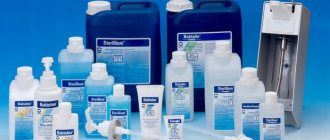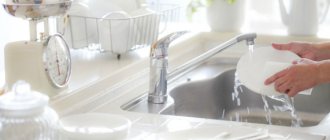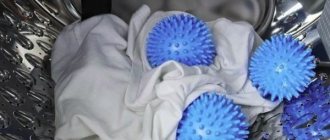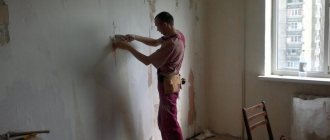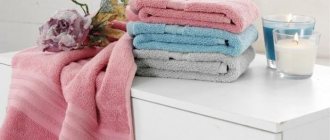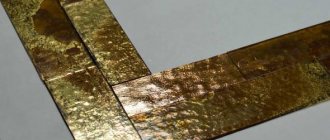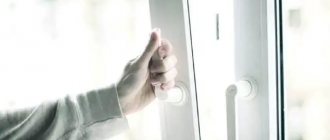Cleaning work in the house cannot be done without washing the floors. This is one of the most important household chores, the result of which is visible to the naked eye. For better results, it is highly recommended to use detergent.
Measures to clean the floor
However, it does not have to be a purchased composition; it is quite possible to use a folk recipe and prepare a floor cleaner with your own hands. We will present some folk recipes for cleaning floors that you can do with your own hands in this article, for different floor coverings.
How often should you wash floors?
Regular cleaning with a damp cloth versus a vacuum cleaner will reduce the amount of dust. It is especially important to frequently clean surfaces in apartments where allergy sufferers, asthmatics, and children live.
According to established sanitary standards, surfaces in schools, hospitals and clinics must be washed every day. But such standards are designed for premises where tens and hundreds of people visit each day.
There is no need to wash the floors in an apartment where 1-2 people live so often - 2-3 times a week is enough. But, if the family has pets and children, it is better to carry out wet cleaning every other day.
How to wash floors
The choice of detergents for cleaning floors is quite extensive.
Professional products
The most effective means include the following:
- "Sarma". When using it, you need to work with rubber gloves. Cleans, disinfects, kills unpleasant odors. Mix 40 ml of the product with 5 liters of water, take 60 ml for disinfection.
- Liquid product "Grass Arena" with a polishing effect. Suitable for all floor coverings, especially laminate and parquet. There is no chlorine in the composition, the product does not leave streaks.
- Composition “Ecover” with linseed oil. The product is safe and non-toxic due to the absence of chlorine. Can be used to clean all surfaces.
- "Glorix" It is characterized by a safe composition, is inexpensive, and is suitable for any coating.
- Gel "Vaily". There is no chlorine in the composition, the product cleanses even old stains.
Folk remedies for cleaning floors
Folk remedies will help cope with various types of pollution. But before use, it is important to test them in an inconspicuous area to avoid damaging the coating.
Vinegar
Vinegar disinfects and removes various stains. Based on it, you can make various floor cleaning compositions:
- Polish for laminate and linoleum. To prepare it, 5 liters of water are diluted with 5-6 tablespoons. vinegar.
- Floor cleaner. Mix water and vinegar in a 1:1 ratio and wipe the floor, which will remove odor and heavy dirt.
Laundry soap
To wash the floor, take a bucket of water, add a little grated laundry soap, and wash the coating with the product. Finally, you need to walk over the surface with a cloth moistened with clean water to avoid streaks. This composition will remove odors, add shine to coatings, and disinfect the floor.
Inventory: which rag or mop is better to choose
To simplify the process of cleaning the floor, you need special equipment:
- Mops. The most common is a mop with a MOP attachment, which makes it easy to clean large areas. The only drawback is that it is difficult to remove corners with its help. For such areas, it is better to choose a rope mop. When choosing a product, you should pay attention to the length of the handle - it should reach the armpits.
- Rag. Allows you to clean corners, baseboards, and areas around furniture legs. It is better to choose a rag made of polyamide: the fabric absorbs moisture and is resistant to mold. You can take an old terry towel, cut it, put the rag on the mop: it washes easily and does not leave damage on the surface.
- Brush. To remove dried-on stains and marks, you need a brush with stiff bristles. Such tools should not be used on linoleum or parquet to avoid leaving scratches.
Many people purchase steam cleaners for cleaning floors. They are expensive, but have many advantages. The equipment effectively removes dirt and destroys microbes. Suitable for any floor covering except parquet.
What means to use
Even experienced housewives may have doubts about what to wash floors with to disinfect. Not to mention eliminating some stains that you don’t encounter every day (for example, spilled fuel oil, paint, varnish, brilliant green, etc.).
Traditional methods will help in cleaning the apartment.
There are special cleaning products and traditional methods. Each of them has supporters as well as opponents. It's only fair to familiarize yourself with both ways to clean your floors in order.
Special means
Special cleaning products include: household, semi-professional and professional. They are listed in ascending order of cost, but also in order of effectiveness. Grandmother's methods do not always allow you to get rid of difficult stains.
In this case, the nearest household store will be happy to offer you a wide selection of special equipment. Let's look at some of them:
- Bagi "Oranit" - universal application. On the one hand, the product will get rid of most simple stains and dirt. On the other hand, for some types of surface it is better to use special, targeted products.
- Leifheit Protect - suitable for cleaning parquet and laminate flooring.
- "Tri-Bio" is an environmentally friendly biological product with a wide range of applications.
Involve children in cleaning floors.
IMPORTANT! There are hundreds and even thousands of varieties of similar products on the market. But all of them can be conditionally divided into: narrowly targeted agents and broad-spectrum agents. If the contamination is complex and the coating is whimsical, it is better to choose a narrow-profile product.
Folk remedies
Sometimes products that have been used for more than one generation help just as well as modern ones. Moreover, you won’t have to spend money on them, and the effect will fully satisfy your expectations. Lemons, mustard, and salt are also used.
Lemon contains active substances that fight pollution.
Some products have become especially popular due to their effectiveness. We invite you to get acquainted with some of them.
Vinegar
It is important to know not only how to properly mop floors, but also what products to use. Vinegar not only has nutritional value, but can also be used as a cleaning aid.
Vinegar is an effective and affordable remedy.
The only drawback is the specific smell, which can be easily eliminated with a couple of drops of lavender essential oil. For floors, the following recommendation should be applied:
- Dilute half a glass of table vinegar in 10 liters of water;
- add a few drops of lavender essential oil;
- a little grated soap;
- wash the floor with the resulting solution;
- rinse with clean water without additives.
NOTE! Additionally, you can use lemon juice if you don’t have lavender essential oil.
Fir needles
Pine twigs and needles do not cease to be needed after the New Year holidays. As practice shows, this is a reliable means of freshening the air in a room.
Spruce will bring a good aroma into the house.
All you need to do:
- put a few branches in a saucepan, add water and bring to a boil;
- cook for 5-7 minutes over low heat;
- pour the contents into a bucket of water;
- wash the floor with the resulting solution.
After washing, the air in the room will be pleasant and fresh, creating the feeling of being in a pine forest.
Soda
This substance is actively used in cooking, but it may well become an assistant in cleaning your apartment. Soda can be used to prepare a solution for cleaning floors, as well as as a separate product. For example, a greasy stain on tiles, tiles, or linoleum can be wiped off with baking soda and vinegar.
An equally popular cleaning product is baking soda.
To do this, pour baking soda onto the stained area and pour an equal amount of table vinegar on top. During the reaction, dirt will peel off from the surface. All you have to do is wash it off with a rag and water.
How to properly wash different floors
Before washing, you need to vacuum or sweep the surfaces - this will remove some of the dirt, which means that wet cleaning of the floor will be more effective and will require less time.
It is important to learn how to mop your floors correctly, which will avoid streaks and dirt accumulation in the room. To do this, move a moistened rag from the corners of the room to the center, and not vice versa.
Laminate
This is a reliable floor covering, but it is resistant to moisture and scratches. Secrets for cleaning surfaces:
- For wet cleaning, it is better to use a microfiber cloth. It is important not to let the laminate get too wet, which could cause it to swell.
- To prevent streaks from remaining on the surface, you can add 1 tsp to the water. vinegar.
To wash laminate flooring, it is recommended to use professional products that do not wet the floor covering and create a thin protective film on the surface. Simply dilute the composition in water according to the instructions and rinse the laminate with a damp cloth.
Linoleum
This is a practical floor covering. Linoleum needs to be cared for carefully, since this finishing material is resistant to high temperatures and chemical abrasives. Before washing, it is recommended to vacuum the linoleum to avoid damage from grains of sand or small pebbles. Also, dry dirt that is not removed when coming into contact with water can cause streaks.
Floorboards
After painting, it is recommended to wash wooden floors with vinegar and ammonia. A solution prepared on their basis will remove dirt and unpleasant odors.
To remove heavy stains, you need to moisten the sawdust with turpentine, rub the mixture into the stain, leave for an hour and remove the residue with a soft bristle brush.
Parquet
There are several recommendations for washing parquet boards:
- For cleaning, it is best to use a telescopic mop with a microfiber attachment. It should not be too wet so as not to spoil the coating.
- Before washing the floor, you need to thoroughly vacuum it to get rid of small abrasive particles of debris that can damage the parquet.
Do not use a washing vacuum cleaner or steam cleaner - such equipment will cause the parquet to swell. You can also wash the floors using professional products, such as Pronto or Denkmit. The products contain wax that will protect the surface from wear and UV rays.
Tile
In small rooms, tiles can be washed without using a cloth or mop. Algorithm of actions:
- Prepare a solution for cleaning.
- Pour into a container with a spray bottle.
- Spray the mixture onto the tiles and leave for 20-30 minutes.
- Wash the tiled floor with a clean cloth.
- Finally, treat the surfaces with a dry microfiber cloth, which will avoid streaks on the surface.
To clean surfaces, just add a little dishwashing gel to water, stir, and rinse the surface. It is important to clean the tile floor properly, without using too much detergent - after drying, it can leave a sticky film on the surface.
To wash heavy stains, it is recommended to use the following method:
- Add 5 drops of ammonia to a 10 liter bucket of water.
- Wet the mop and wipe the floor covering.
- Rinse again with clean water to avoid streaks.
If you have to wash ceramic tiles with a rough surface, it is better to choose a store-bought product, such as “Cif”, “Oranit”, “HG” or “Passiflora”. It is not advisable to use abrasive powders to avoid leaving scratches.
Self-leveling floor
To wash self-leveling floors, you need to choose gentle detergents - any abrasive powders or brushes with hard bristles are prohibited. They may leave scratches on the surface.
Briefly about linoleum and its varieties
From Latin, “linoleum” is literally translated as “linseed oil” (linum - oil, oleum - oil). Now, of course, it is produced using other technologies - from polymer materials.
Source: @kovrolin05
The practical and inexpensive base that formed the basis of linoleum has endowed it with a number of advantages:
- linoleum is not afraid of moisture, like wood, for example;
- it adapts well to different temperatures;
- resistant to a number of mechanical influences;
- it is easy to care for;
- inexpensive;
- easy to install;
- can last a very long time;
- has high heat and sound insulation properties.
There are three types of linoleum:
- Natural
It is a little more expensive than the other two types, but justifies the price with its properties. Natural linoleum is durable, wear-resistant and environmentally friendly. This material withstands fire well and has antistatic properties.
- Polyvinyl chloride linoleum (PVC)
This is the most budget-friendly flooring available. It is in high demand not only because of the price, but also because of its practicality.
The only downside that can be noted is that at low temperatures it becomes brittle and loses its ductility.
- Glypthal or alkyd linoleum
But the most vulnerable type of linoleum is still not PVC, but glyphthalic. If you decide to cover the floor with it, then be prepared for the fact that cracks may appear on it. Especially if alkyd linoleum is in the bathroom or kitchen - the most trafficked rooms. Therefore, it is recommended to use it for bedroom decoration.
- Linoleum relin, or rubber, is plastic and waterproof.
It consists of two layers, the total thickness of which is from 3 to 6 mm.
- Colloxylin linoleum
This type of coating is made from nitrocellulose. It provides linoleum with flexibility and moisture resistance, while at the same time imparting a characteristic shine. This type is not fire-resistant, so it is better not to lay it in the kitchen.
The classification of linoleum does not end there. It is also divided according to the type of base: foam or jute.
- Foam has high durability. A coating with such a base is an excellent option for residential premises. A large palette of colors and patterns will allow you to find the best covering option for your apartment or house.
The jute base, in turn, is well suited for decorating a bedroom or living room, or any other room with low traffic.
This base retains heat perfectly and will last for many years (depending on the thickness of the protective layer).
How to clean difficult stains
Complex stains are more difficult to clean - they often remain on the floor after cleaning. The method of removal depends on the type of stain:
- Glue. To remove traces of the substance, you first need to place a damp, warm towel on the stain, leave for 3-5 minutes, remove the remaining composition with a scraper and rinse the floor again.
- Black stripes from shoes. To get rid of marks, soda will help: pour the powder onto a damp sponge, wipe the dirt with it, and wash the floor.
- Iodine, brilliant green. To remove them, you can take alcohol or vodka: moisten a napkin with liquid, wipe the contaminated area, wipe with a dry cloth.
- Rust. A mixture of soda and vinegar will help against such stains: wipe the stain with a sponge soaked in vinegar and sprinkle soda on top. When the components react, wipe the dirt again with the hard side of the sponge, then with a dry cloth.
If your home has been renovated, it may leave behind contaminants. To remove whitewash, mix water with vegetable oil in a 1:1 ratio, and wipe the stains with the resulting liquid. Then treat the surface with a vinegar solution and wash off any remaining contamination with clean water.
Before washing the floor after painting, you should make sure that the composition is completely dry. In the future, you should follow simple instructions:
- Warm water is poured into the container.
- Add 1-2 tbsp. vinegar.
- Wash surfaces with a clean cloth, repeating the procedure if necessary.
What do you need to wash glass?
In order to independently prepare a solution that perfectly cleans glass and does not leave residue or streaks, you will need the following:
- warm water - five liters;
- cheap shampoo or dishwashing detergent without additives - half a large spoon;
- acetic acid (concentration 70%) - one and a half large spoons.
If you don’t have concentrated acid on hand, you can use a glass of simple vinegar, such as apple cider vinegar.
All components should be thoroughly mixed and light foam should be whipped.
How to clean the floor in a house with children
Household chemicals often contain substances that can cause allergies. For young children who spend most of their time on the floor, this can lead to unpleasant health consequences. Therefore, when cleaning the flooring in an apartment where children live, it is more correct to use folk remedies.
Laundry soap and vinegar-based solutions are considered safe. On sale you can find some household chemicals that are safe because they do not contain fragrances or harmful components. Among them:
- "Our mother";
- "Stork";
- "Baby Swimmer"
Regardless of the product chosen, after using it, a residue may remain on the floor, which is still dangerous for the child. Therefore, it is recommended to wipe the floor with clean water after each surface wash.
Is it possible to wash linoleum with bleach and “Beliznoy”?
Before we start talking about folk and professional linoleum care products that will provide it with shine and preserve its beauty, let’s figure it out:
Source: @kovrolin05
Is it worth washing this coating with bleach and bleach based on it - “Whiteness”. There are housewives who will confidently say that nothing bad will happen to the linoleum with such care, but they will have to be disappointed. After one time, perhaps, the negative consequences are not so noticeable, but over time the cumulative effect will work, which will definitely make itself felt.
Chlorine-containing agents react aggressively with the surface. It destroys not only dirt and bacteria on linoleum, but also its protective film. The more often such “peeling” is performed, the faster even the thickest protective layer will wear out. As a result, the once nice linoleum will become dull and gray, and will also begin to get dirty faster.
Do not miss
- Do not miss
6 steps to a clean apartment: spring cleaning with pleasure
Another disadvantage of using bleach and “Whiteness” is their pungent odor, which literally eats into the surface.
To be fair, it should be said that modern housewives now practically do not resort to such harsh means when cleaning. Which is quite logical, because there are many specialized products for cleaning linoleum.
Important! Do not use hot water to clean the floor. It can cause swelling of the linoleum.
If there are pets in the house
Dogs or cats living at home can affect the cleanliness of the apartment. To remove hair accumulations, you must adhere to the following rules:
- When cleaning, pay attention to corners and hard-to-reach areas where the most dirt accumulates;
- It is best to remove hair using a special roller attachment for a vacuum cleaner;
- If you have a lot of pets and don’t have time for daily cleaning, you can buy the cheapest washing robot vacuum cleaner.
If your pet periodically marks the apartment, you should not wash the puddle with plain water - this will only increase the unpleasant odor and increase the contaminated area. The following products will help you clean your floors:
- Potassium permanganate. Dissolve 5 crystals in 200 ml of water - the liquid should turn out to be light pink. The sponge is moistened with the product, the stain is wiped, the floor is washed with clean water and wiped dry.
- "White". The composition is diluted in water in a ratio of 1:10, the contaminated area is treated, washed with clean water and wiped with a dry cloth.
- Washing powder. If there is a strong smell of urine in the room, dissolve 1-2 tablespoons in 5 liters of water. powder, wash the entire floor with the product. To consolidate the result, you can wipe the coating with medical alcohol diluted with water.
Scratches often appear on the floor from the claws of pets. You can deal with them using the following means:
- Wipe damage on the wooden floor with a walnut core;
- to remove scratches, prepare a mixture of vegetable oil and vinegar, rub it into the surface and leave to dry for 2 hours;
- To remove damage from the surface of natural oak or mahogany, you need to dissolve 5 drops of iodine in 200 ml of warm water and wipe the floor with the liquid.
It is recommended to test its effect on an inconspicuous area before using any product.
